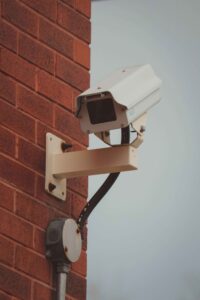1. Introduction to Smart Home Devices
Smart home devices refer to a collection of internet-connected gadgets that allow homeowners to control various aspects of their living environment. From adjusting the temperature to managing home security systems, these devices are integrated into a network that can be easily managed through apps on smartphones, tablets, or voice assistants like Amazon Alexa or Google Assistant. The concept of smart homes is part of the broader Internet of Things (IoT) trend, where everyday objects are connected to the internet to improve efficiency and usability.
2. Advantages of Smart Home Devices
- Convenience: Smart home devices offer unmatched convenience. You can control multiple aspects of your home from anywhere. Forgot to turn off the lights before leaving? Simply do it from your phone. Want your home to be cozy when you arrive? Adjust the thermostat remotely.
- Energy Efficiency: These devices help in reducing energy consumption. Smart thermostats, for instance, learn your schedule and adjust the temperature accordingly, ensuring that heating and cooling are used only when needed. Similarly, smart lighting systems can automatically turn off lights when a room is unoccupied.
- Enhanced Security: Security is a major advantage of smart home devices. With smart locks, surveillance cameras, and alarm systems, you can monitor your home in real-time, receive alerts about suspicious activities, and even control access remotely.
- Customization: Smart home devices allow for a high degree of customization. You can create specific settings or routines tailored to your preferences, such as setting the lights to dim and the thermostat to a lower temperature as you get ready for bed.
- Remote Access: One of the biggest advantages is the ability to control your home from anywhere. Whether you’re on vacation or just out for the day, you can check in on your home, control devices, and ensure everything is as it should be.
3. Disadvantages of Smart Home Devices
- Privacy Concerns: One of the major concerns with smart home devices is privacy. Since these devices are connected to the internet, they can be vulnerable to hacking and unauthorized access. Protecting your network with strong passwords and regularly updating the devices’ firmware is crucial.
- High Initial Cost: The initial investment in smart home technology can be steep. While these devices can lead to long-term savings, the upfront costs might be a barrier for some homeowners.
- Complexity: While these devices are designed for convenience, they can also add a layer of complexity. Setting up a smart home system can be challenging, especially when dealing with devices from different manufacturers that may not be compatible with each other.
- Dependence on Internet Connectivity: Smart home devices rely heavily on internet connectivity. Any disruption in your internet service can affect the functionality of your smart devices, making them temporarily unusable.
- Learning Curve: For those who are not tech-savvy, there can be a steep learning curve in getting the most out of smart home devices. Understanding how to set up, manage, and troubleshoot these systems can require time and effort.
4. Popular Types of Smart Home Devices
- Smart Lighting: Brands like Philips Hue offer smart bulbs that can be controlled via smartphone apps. These lights can be dimmed, colored, or set to schedules, all with a simple command.
- Smart Thermostats: Devices such as the Nest Thermostat or Ecobee allow you to control your home’s heating and cooling systems. They can learn your schedule and adjust temperatures to optimize comfort and energy efficiency.
- Smart Security Systems: Security devices like the Ring Doorbell, Arlo cameras, and smart locks enhance your home’s security. These systems provide real-time video feeds, motion detection alerts, and remote access to lock or unlock doors.
- Smart Appliances: From refrigerators that can notify you when you’re running low on milk to ovens that you can preheat remotely, smart appliances add convenience to daily household tasks.
- Smart Entertainment Systems: Devices like smart TVs and speakers provide a seamless entertainment experience. You can control your TV, stream music, and even connect multiple devices for a more integrated experience.
- Voice Assistants: Amazon Echo, Google Nest Hub, and similar devices serve as the hub of your smart home. They allow you to control other smart devices using voice commands, manage schedules, and even make shopping lists.
5. Conclusion: The Future of Smart Home Devices
Smart home devices are quickly becoming a staple in modern households, transforming how we interact with our living spaces. The future promises even more integration, with smarter, more intuitive devices that can learn and adapt to your lifestyle. However, it’s important to be aware of the potential drawbacks, such as privacy concerns and initial costs. As technology continues to advance, smart homes will likely become more accessible and even more integrated into our daily lives, making them an exciting area of innovation in the years to come.
4o




Leave A Comment